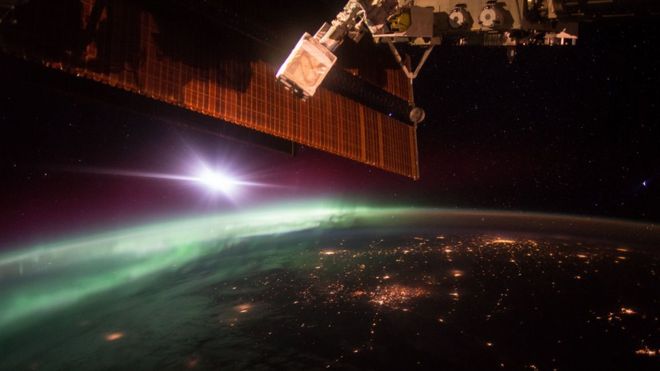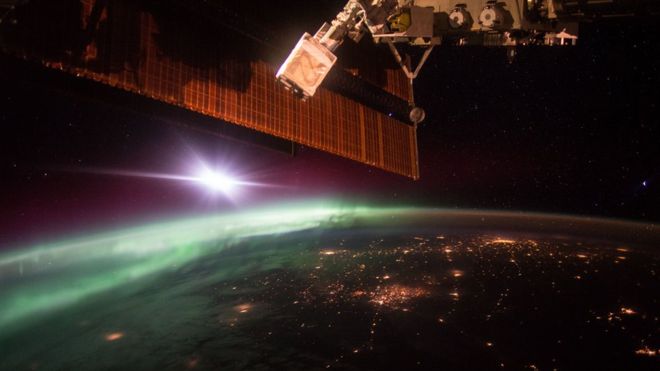
Astronauts who spend months on lead to orbit must discover ways to make do and mend in the first-class way of life of sustainability.
Missions to carry sparkling components are highly-priced and time ingesting. For any astronauts who take on a mission to Mars, planned for the 2030s, with the spherical experience probable to take two years, existence might be even more difficult.
That prospect has helped focus minds at america‘s area agency, Nasa, on clever methods to provide for each day needs in hard situations. however the classes being discovered are also proving to have knock-on benefits down right here on earth.
As Cady Coleman, a modern Nasa astronaut and innovation lead, explains: “We essentially have a limited environment in space, and it causes us to reflect onconsideration on how we get stuff there, how we hold it, and how we get most use out of it.”
Ms Coleman says space can be a tremendous “technology accelerator” – and that sustainable technology devised with the aid of Nasa often discover themselves repurposed to be used on the planet.
photo copyright NASA
picture caption Astronaut Cady Coleman has been leading Nasa’s giant efforts on sustainability
companies inclusive of Nike, DIY large Kingfisher and Ikea are already pursuing so-known as closed loop enterprise models – wherein waste is eliminated via repurposing and recycling – within the desire of being greener and reducing charges. And with pressure on water and fertile land growing, farmers are seeking less enter–extensive methods.
So what may be discovered from Nasa’s research?
1. developing meals
Take Nasa’s decades of research into developing vegetables in area, which culminated in astronauts harvesting and consuming lettuces aboard the global space Station (ISS) closing 12 months.
photo copyright NASA
image caption Astronaut Steve Swanson harvests a crop of purple romaine lettuce vegetation at the ISS
The crew grew the produce in “seed pillows” – a changed model of the commonplace develop bag – and used in particular designed, strength–efficient LED lights to power photosynthesis, an idea that originated with Nasa back within the overdue Nineties.
The lights, which use extra growth-inducing red and blue-coloured LEDs than inexperienced ones, have additionally turn out to be instrumental inside the rise of so-referred to as vertical farming back on the planet, a extraordinarily sustainable form of agriculture.
Such farms develop produce on shelves interior to optimise use of space and water, and could help feed a swiftly growing global population within the destiny, say proponents.
green sense farm close to Chicago, for example, re-makes use of most of its water, is about 10 times more space–efficient than a conventional farm, and harvests 26 times a year compared to the usual or three.
photo copyright inexperienced experience
photograph caption Nasa’s lights, which use extra purple and blue LEDs than green, are utilized by vertical farms on earth
“NASA’s want to preserve all sources in area has induced technology to trickle down to earth,” says inexperienced feel‘s leader govt Robert Colangelo.
“a good example is energy and warmth-saving LED lighting fixtures that maximise photosynthesis. we’ve also developed a closed-loop device for taking pictures nutrient water and evapotranspiration from vegetation, stimulated with the aid of NASA water management structures.”
2. smooth water
In area, water is in brief deliver, so Nasa has advanced an revolutionary way to filter out waste water at the ISS using chemical and distillation procedures. This we could it flip liquid from the air, sweat or even urine into drinkable H2O.
photograph copyright NASA
picture caption The global area Station has been continuously occupied by using human beings in view that 2000
In truth, due to the fact that 2008, greater than 22,500 pounds of water had been recycled from urine alone at the ISS – some thing that might have price greater than $225m (£160m) to launch and deliver to the station from Earth.
“most people are horrified once they see what we drink!” says Ms Coleman. “but the filtered water up there simply tastes stunning, it virtually is delicious.”
Nasa has on account that certified the generation to corporations on the earth, which have created transportable filters to be used in places where fresh ingesting water is scarce.
Filters produced with the aid of US company Water safety business enterprise, for instance, had been established in villages throughout Mexico and Iraq, allowing citizens to purify water from infected sources.
picture copyright Water safety Corp
photograph caption Filters offering Nasa technology are helping people in rural Mexico get entry to easy ingesting water
“the muse to apply this technology in… developing international locations was without delay related to what became required for it to be successful in space,” says Ken Kearney, vp of income and advertising.
“it’s miles tremendously reliable and requires no professional preservation. it is able to be deployed in regions in which there may be little or no energy, the use of simplest gravity pressure to push water through the device.”
Nasa is also investment research into whether or not human faeces can be recycled into meals on lengthy space missions – even though it appears not likely that such an intense answer would trap on lower back on this planet.
3. Recycle your tools
but Nasa’s efforts move way past food and drinks.
Ms Coleman factors out that “down here, we are able to pretty an awful lot all go to the hardware keep to buy gear – but our scenario in area drives us to be greater creative and to renew, reuse or recycle tools.”
As such, Nasa is experimenting by way of three-D printing equipment out of difficult plastic on board the ISS.
image copyright NASA
photograph caption Astronaut Barry Wilmore shows off a ratchet wrench made with a 3-d printer at the ISS
“We could need a device, get a design for a tool sent up, print a device and then reuse that fabric to print different tools,” says Ms Coleman.
Researchers from NASA’s Ames studies Centre in California are also searching into the trouble of litter, that may clutter up a shuttle or space station.
Crews try to avoid jettisoning trash in space, as it may create a risk for other spacecraft and contaminate planets or moons. And so Nasa is trying out a trash compactor that melts down garbage, which include plastic water bottles and foil drink pouches, remodeling them into eight-inch-diameter tiles.
these should doubtlessly be used to strengthen radiation protecting on a spacecraft.
4. inexperienced homes
Nasa’s technology could cause greener homes down on this planet, too.
Nasa’s Ames centre has constructed a green building on its campus in Moffett area, California, wherein energy-saving technology of the future are being examined.
Sustainability Base leaves “truly no footprint” and uses numerous innovations from area, inclusive of solid oxide fuel cells of the type observed on Nasa Mars rovers to generate strength, and a system that reuses wastewater to flush lavatories.
these buildings represent the fruits of an universal philosophy that consuming assets ought to be carried out, anyplace feasible, in keeping with closed loop ideas, without laborious supplies or creating unnecessary waste.










